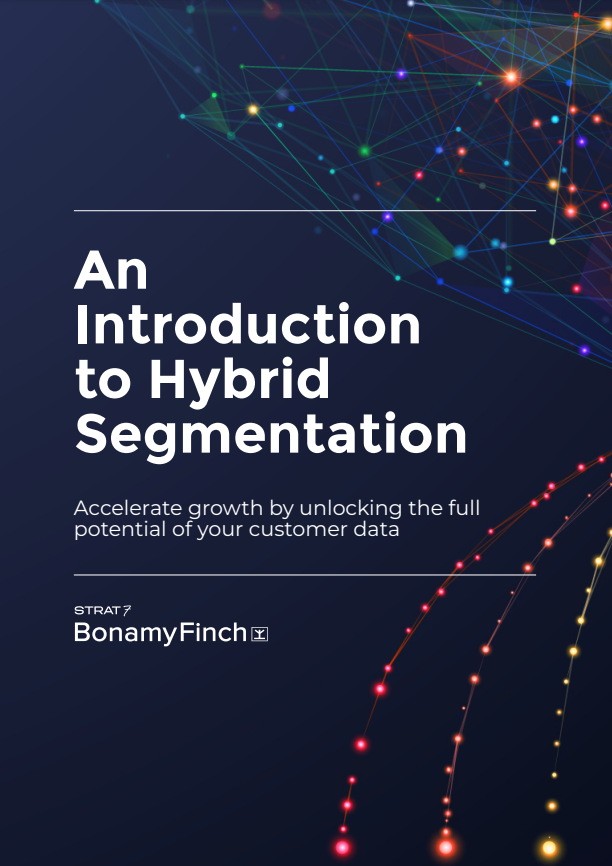Segmentation has long been a fundamental strategy for businesses seeking to understand their customers better. It forms the bedrock of positioning, targeting, innovation and communication strategy. However, as the business landscape evolves, traditional segmentation methods are revealing their limitations, making room for a more advanced and comprehensive approach – hybrid segmentation.
The foundation of marketing: Segmentation
Traditional segmentation approaches: Challenges
Survey-based segmentation:
Database customer segmentation:
However, without a deep understanding of ‘why’ customers behave as they do, personalization efforts become challenging. Customers may receive generic messages that don’t resonate with their specific needs and preferences. You’re also limiting yourself to current customers, and will fail to address the needs of potential customers rejecting your current propositions. Often, database segmentations become a tool to drive promotions rather than building long-term engagement with the brand.
Separate, parallel survey and database segmentation:
Hybrid segmentation: The comprehensive solution
Hybrid segmentation tackles these problems head-on, combining the strengths of both survey-based and database customer segmentation while mitigating their limitations.
Here’s how it works:
360-degree customer view:
In our last blog series, we talked a lot about unlocking the commercial value of your data. Hybrid segmentation integrates customer data, survey data, and third-party marketing data to create a holistic view of your customers. It answers both the ‘what’ and the ‘why’ behind customer behaviours, providing a more complete understanding.
Machine-learning algorithms:
Machine-learning algorithms attribute segments to your database, enabling personalized marketing and engagement at scale. This means you can deliver tailored experiences to individual customers more efficiently.
Unified teams:
With hybrid segmentation, all teams within your organization have access to the same information, fostering alignment and ensuring that everyone shares a common focus. This leads to more successful activations and cohesive strategies.
Stay tuned for our upcoming blog posts, where we’ll delve into each of the benefits of hybrid segmentation in more detail, showcasing real-world success stories that demonstrate its impact.
Ebook
An introduction to hybrid segmentation
Download our ebook to learn more about how this advanced approach to segmentation will elevate every customer interaction you have, fuelling business growth.

